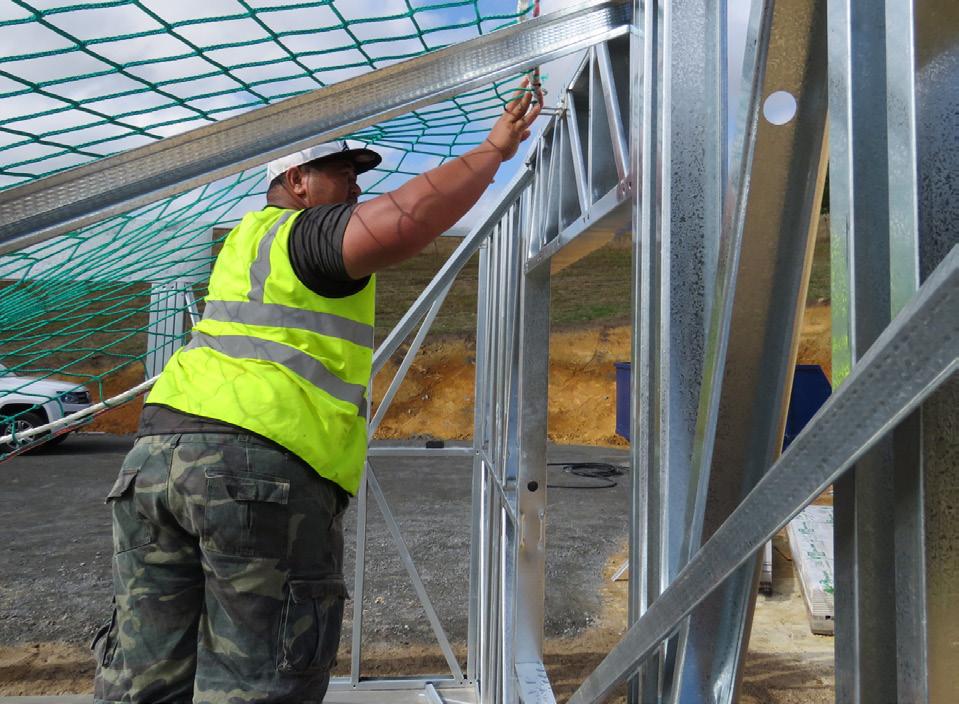
2 minute read
Industry leader in soft fall protection on construction sites
Massey University rigorously tested all elements of the Safety Nets NZ system
With the enactment of the Health and Safety at Work Act (2015) it became apparent that there was a need to assure customers that they comply the requirements of the Act in safety measures for fall arrest.
Advertisement
“We needed to have our system independently analysed, engineered and ultimately certified. This meant that not only did the individual components of the safety net fall arrest sys- tem have to be tested, the performance of the safety fall arrest system as a whole also needed to be studied,” says General Manager Craig Daly.
A team at the School of Engineering and Technology at Massey University tested a variety of drop heights and weights, different bracket centres, various net sizes and points where the load strikes the net.

“It even tested nets of different ages and repaired nets, with the results being collated and analysed to effectively confirm that our safety fall arrest system works,” says Daly.

“This enables PCBU’s to discharge their responsibilities in regard to the requirements of the in the use of a system that is without risk to the health and safety of it’s workforce.”
When the nets have been installed and inspected by a Safety Nets NZ team and a handover certificate completed by our certified rigger, the client can then commence works above the safe area of the net.

“All of our safety documentation has been produced in such a format as to ensure that it complements the overall site safety policy and manual that the Principal Contractor is required to establish on all projects,” says Daly.
Click here to read inspection guidelines
The newly released New Zealand Guide to Temporary Traffic Management sets out how road work sites should be managed, replacing the Code of Practice for Temporary Traffic Management.
The way we manage traffic around road work sites is changing to be based on managing specific risks for each site. The new approach has the potential to be more efficient and cost effective, at the same time as keeping road workers and road users safe.
Waka Kotahi NZ Transport Agency has said the new guidance aims to drive a culture change to improve safety for road workers and road users to work towards its vision of zero deaths and serious injuries on New Zealand’s roads.
People continue to die and be seriously injured at TTM sites. Between 2017 and 2021, there were 43 fatal crashes and 287 serious injury crashes at worksites – compelling evidence that a new approach was needed to temporary traffic management across New Zealand.
Waka Kotahi NZTA had listened to industry throughout the past years in triggering these systemic changes, reconciling more than 1,200 submissions of feedback as part of a Code of Practice review in the leadup to the creation of the new Guide and acknowledging the role industry must play in taking responsibility for safer outcomes.
There was a strong case for change, and the new Guide followed on from WorkSafe guidance for road and roadside workers issued late last year, which set out how to manage health risks, safety risks, and practices when setting up and operating traffic






